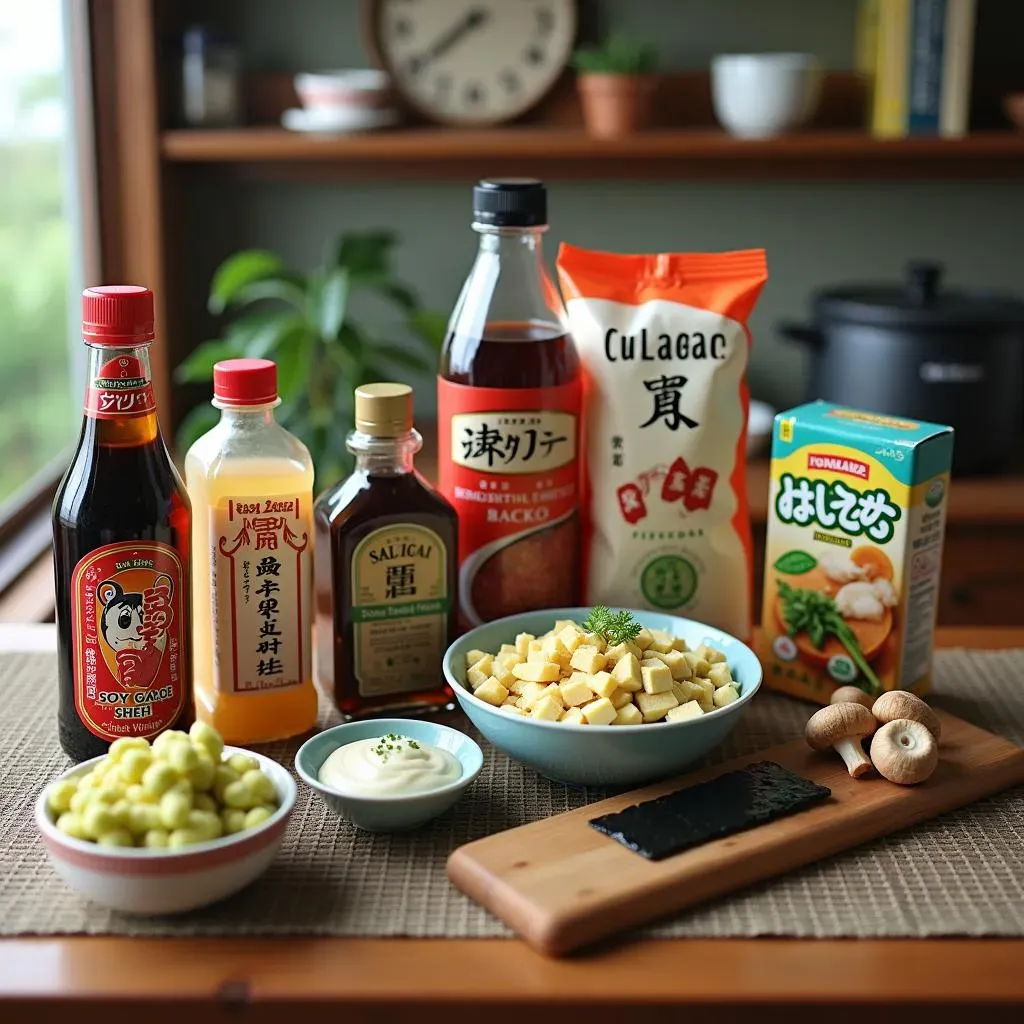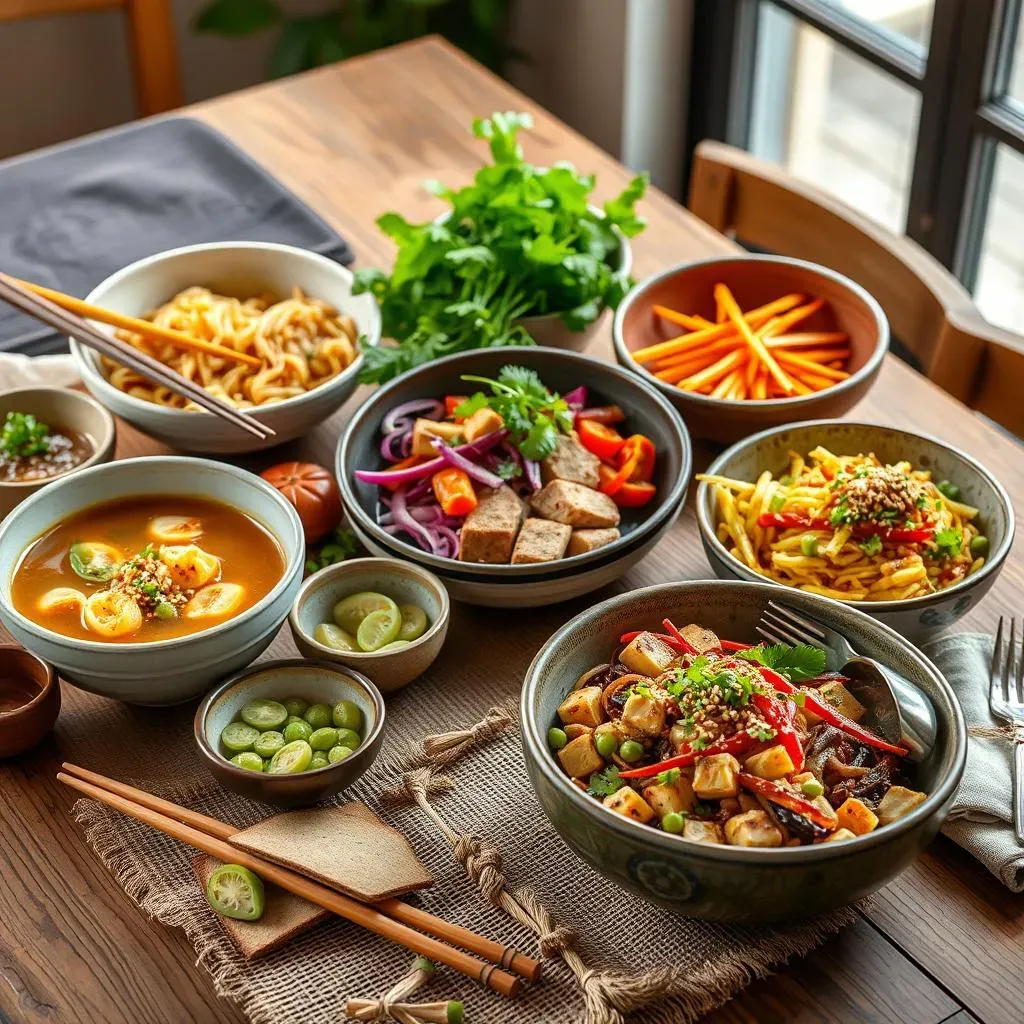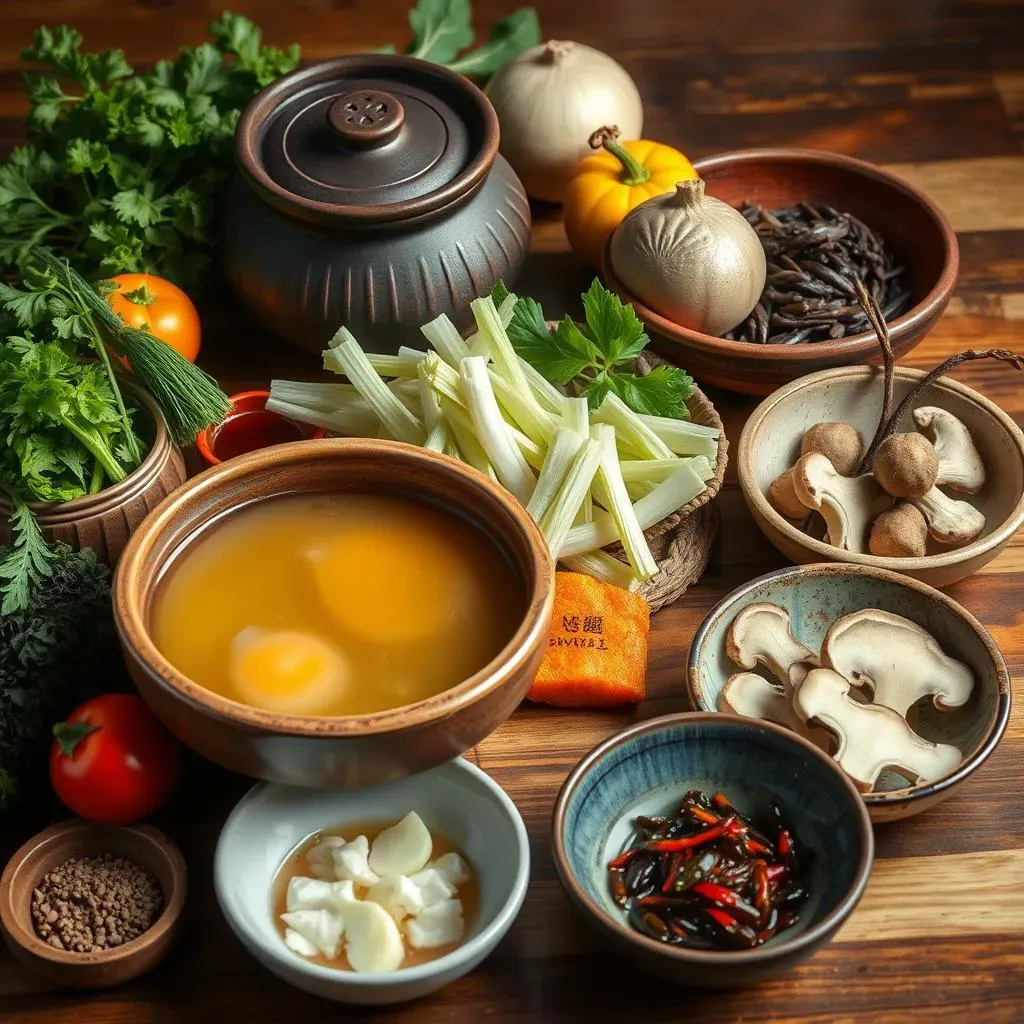Table of Contents
Craving the vibrant flavors of Japan but sticking to a plant-based diet? You're in for a treat! Forget complicated cooking; we're diving into the world of easy vegetarian Japanese recipes that are as delicious as they are simple to make. This isn't about spending hours in the kitchen; it's about bringing the authentic taste of Japan to your table with minimal fuss. We'll start by setting up your pantry with the must-have ingredients, then jump straight into quick and easy recipes perfect for busy weeknights. You'll also learn some basic techniques that will make your cooking adventures smoother and more enjoyable. Finally, if you're feeling adventurous, we'll take a peek at some more complex flavors to tantalize your taste buds. Get ready to transform your kitchen into a haven of delicious, vegetarian-friendly Japanese cuisine! Let's get cooking!
Stocking Your Pantry for Easy Vegetarian Japanese Recipes
Stocking Your Pantry for Easy Vegetarian Japanese Recipes
The Foundation: Essential Japanese Ingredients
Okay, so you wanna whip up some tasty vegetarian Japanese food? First things first, let's get that pantry stocked! Think of it like building a culinary Lego set; you need the right pieces to create something amazing. We're talking about the core ingredients that'll give your dishes that authentic Japanese flavor without needing a trip to Tokyo. You'll need staples like soy sauce (both regular and tamari for gluten-free friends), rice vinegar for that tangy kick, and sesame oil for a nutty aroma. Don't forget about mirin, a sweet rice wine that adds depth to sauces, and miso paste, the umami bomb that'll make your taste buds sing. These are your base ingredients, the workhorses of your kitchen.
Tofu and Beyond: Plant-Based Protein Powerhouses
Now that we've got the flavor base down, let's talk protein. Tofu is your best buddy here, and it comes in different textures – from silken for creamy sauces to firm for stir-fries. Edamame beans are also a must, they're packed with protein and super versatile; toss them in salads, soups, or just snack on them straight from the pod. Don't underestimate the power of dried shiitake mushrooms, either; they’re not just for flavor but also add a meaty texture to dishes. And for a bit of extra texture, consider adding some dried seaweed like nori (for sushi or wraps) or wakame (for soups and salads). These are the ingredients that will make your vegetarian dishes hearty and satisfying.
Ingredient | Why You Need It | Where to Use It |
|---|---|---|
Soy Sauce | Salty, umami base | Sauces, marinades, stir-fries |
Rice Vinegar | Tangy, acidic element | Dressings, sushi rice, pickles |
Sesame Oil | Nutty flavor and aroma | Finishing oil, stir-fries, dressings |
Miso Paste | Umami flavor | Soups, sauces, marinades |
Tofu | Plant-based protein | Stir-fries, soups, salads |
The Extras: Flavor Boosters and Textural Delights
Alright, we've got the basics, now let's add some flair! Pickled ginger is a must-have for that zingy palate cleanser, and it adds a nice touch to many dishes. Sesame seeds, both black and white, provide a bit of crunch and a beautiful visual appeal. Consider keeping some nori sheets for making your own temaki or onigiri. And don't forget about the little things like dried chili flakes for a kick and different types of Japanese noodles like udon, soba, and ramen. These extras are what turn a good meal into a great one, so don't skimp out on the flavor boosters!
Quick & Easy Vegetarian Japanese Recipes: Weeknight Wonders
Quick & Easy Vegetarian Japanese Recipes: Weeknight Wonders
Alright, so you've got your pantry stocked, and you're ready to get cooking, but it's a Tuesday night, and you're tired. No sweat! This section is all about those quick and easy vegetarian Japanese recipes that'll save your weeknight dinner game. We're talking about dishes you can whip up in under 30 minutes, using those essential ingredients we just talked about. Forget slaving over a hot stove; these recipes are designed for speed and maximum flavor. We're going to focus on things like quick noodle bowls, speedy stir-fries, and simple tofu dishes that are packed with deliciousness, not effort.
Think of it like this, you want something that tastes like you spent hours on it, but really you just threw it together while listening to your favorite podcast. For example, a quick miso noodle soup can be a lifesaver. Just boil some noodles, add your miso paste, some tofu, and a handful of greens, and bam, you've got a comforting and healthy meal. Or how about a simple tofu stir-fry with whatever veggies you've got in the fridge? Toss it all with some soy sauce, ginger, and garlic, and you're golden. These are the kind of recipes that make weeknight cooking feel like a breeze, not a chore. It’s about using clever shortcuts and simple techniques to get a fantastic meal on the table fast!
Recipe | Prep Time | Cook Time | Key Ingredients |
|---|---|---|---|
Quick Miso Noodle Soup | 5 minutes | 15 minutes | Miso paste, noodles, tofu, greens |
Speedy Tofu Stir-fry | 10 minutes | 15 minutes | Tofu, veggies, soy sauce, ginger |
Edamame and Sesame Rice Bowl | 5 minutes | 10 minutes | Cooked rice, edamame, sesame oil, soy sauce |
Mastering the Basics: Essential Techniques for Vegetarian Japanese Cooking
Mastering the Basics: Essential Techniques for Vegetarian Japanese Cooking
Alright, so you've got some recipes under your belt, but now it's time to level up your game. We're not just throwing ingredients together; we're talking about mastering some fundamental techniques that will make your vegetarian Japanese dishes truly sing. Think of it like learning the chords to your favorite song; once you've got those down, you can play almost anything! One of the first things to get comfortable with is cooking rice – it's the backbone of Japanese cuisine, and getting it right makes a huge difference. Then, we'll tackle the art of slicing vegetables, because uniform cuts aren't just for show; they ensure even cooking. And finally, we will explore the magic of balancing flavors, which is all about combining sweet, salty, sour, bitter, and umami notes to create a culinary symphony. It might sound intimidating, but trust me, with a little practice, you'll be a pro in no time.
Let's break it down, shall we? First, rice. It's not just about throwing rice and water into a pot; it’s about the right water ratio, the proper rinsing, and the perfect simmer. It's almost meditative when you get it right. Then there's the knife work. We're not aiming for perfection here, just consistency. Think about julienning your carrots, dicing your onions, and making sure your tofu is cut into manageable pieces. It’s about making everything cook evenly and look appealing. Finally, the flavor balancing. This is where your taste buds become your best friends. You want to hit all those flavor notes; the sweetness of the mirin, the saltiness of the soy sauce, the tang of the rice vinegar, and that umami kick from the miso. It’s like conducting an orchestra; each element plays its part to create something truly harmonious.
Technique | Why It's Important | Tips for Success |
|---|---|---|
Cooking Rice | Perfect base for many dishes | Rinse well, use correct water ratio, simmer gently |
Vegetable Slicing | Ensures even cooking and appealing presentation | Use a sharp knife, aim for uniform cuts |
Flavor Balancing | Creates a harmonious taste profile | Taste as you go, adjust ingredients to your liking |
Beyond the Basics: Exploring More Complex Vegetarian Japanese Flavors
Beyond the Basics: Exploring More Complex Vegetarian Japanese Flavors
Okay, so you've nailed the basics, and you're ready for a new challenge? Let's talk about taking your vegetarian Japanese cooking up a notch. We're not just making simple stir-fries anymore; we're venturing into the realm of more complex flavors and techniques. This is where things get really exciting! Think about mastering the art of making a truly authentic dashi broth, which is the soul of so many Japanese dishes, or exploring different ways to ferment vegetables for that extra layer of flavor. This section is all about pushing your boundaries and discovering the depths of Japanese vegetarian cuisine. It's about that "wow" factor that comes from a bit more effort, but trust me, it's totally worth it.
We're going to explore the world of Japanese pickles, also known as tsukemono, which add a beautiful tangy, salty, and sometimes spicy kick to your meals. We'll also look at how to use unique ingredients like yuzu, a citrus fruit with an incredible aroma, and sansho pepper, a spice that provides a citrusy, numbing sensation. This is where you learn to really play with flavors and textures, creating dishes that are not only delicious but also visually stunning. It's about taking those core techniques you've learned and applying them in creative and innovative ways. It's like going from playing the basic chords to writing your own song!
Flavor Profile | Examples | How to Use |
|---|---|---|
Umami | Dashi, Kombu, Shiitake Mushrooms | Base for soups, sauces, stews |
Tangy | Pickled Ginger, Yuzu, Rice Vinegar | Condiments, dressings, marinades |
Spicy | Sansho Pepper, Chili Flakes, Gochujang | Seasoning, stir-fries, sauces |
Fermented | Tsukemono, Miso, Natto | Side dishes, toppings, flavor boosters |
Your Culinary Journey with Easy Vegetarian Japanese Recipes Doesn't End Here
So, you've explored the world of easy vegetarian Japanese recipes, stocked your pantry, and mastered some basic techniques. Now, the real fun begins! This is just the start of your adventure into the delicious world of plant-based Japanese cuisine. Don't be afraid to experiment, tweak the recipes to your liking, and most importantly, enjoy the process. Whether you're making a quick weeknight meal or a special weekend feast, there's always something new and exciting to discover. Keep exploring, keep cooking, and most importantly, keep enjoying the incredible flavors that await you. The possibilities are endless, and the deliciousness is guaranteed!